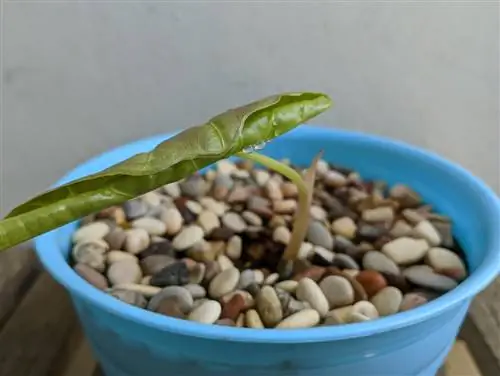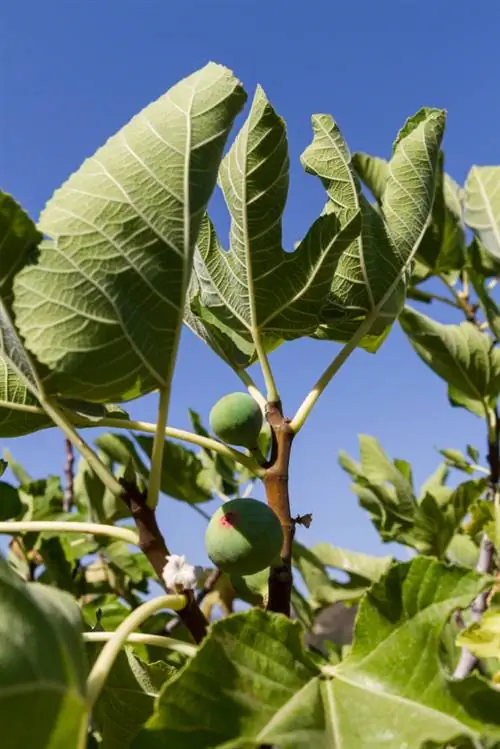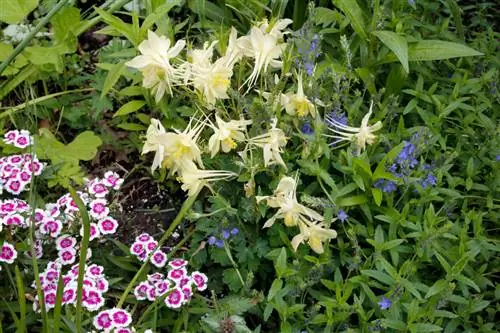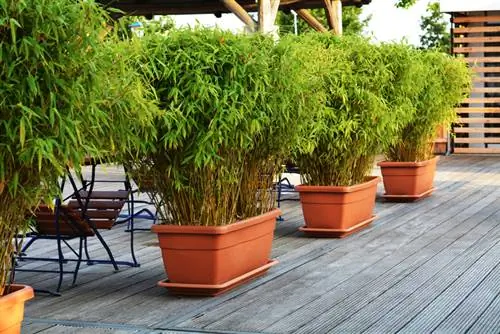- Author admin [email protected].
- Public 2023-12-16 16:46.
- Last modified 2025-01-23 11:22.
The alocasia - also called alocasia, arrow leaf or elephant ear - is an attractive and popular houseplant. If you want to cultivate more plants, we recommend vegetative propagation of the mother plant. We'll show you how to do this successfully here.
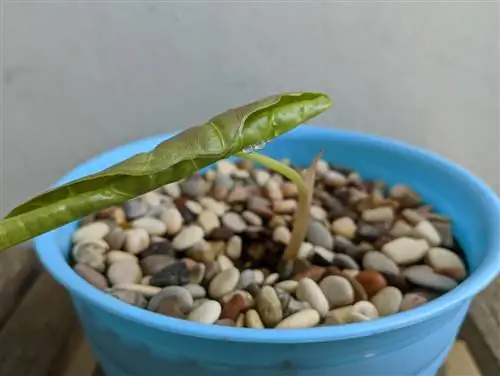
How to propagate Alocasia plants?
Alocasias can be easily propagated through rhizomes or tubers by separating them in spring and planting them separately. Alternatively, leaf cuttings are also possible in summer - these are simply placed in moist growing substrate and kept warm and bright.
How can you propagate alocasia yourself?
Basically you have two methods to successfully propagate the arrow leaf:
- via rhizomes or breeding tubers
- about leaf cuttings
The gardener understands “rhizome” as shoot axes that grow underground and from which the plant reproduces itself. They are thick tubers, also known as daughter or breeding tubers.
Both types of propagation are purely vegetative, so pure clones of the mother plant develop. Therefore, only choose he althy and strong mother plants, as the daughter plants inherit their characteristics as well as diseases. In addition, certain characteristics such as variegation are only passed on through vegetative propagation.
How does propagation via rhizomes work?
The easiest way to propagate the arum plant is via its breeding tubers, which you can simply separate during repotting in spring and plant separately in pots.
- Only harvest tubers that are easy to remove.
- Remove them with a slight twisting motion.
- Do not cut off tightly seated tubers!
- Place the tubers individually in potting soil (€6.00 on Amazon).
- Create a mini greenhouse with a cut PET bottle or glass.
- Keep the substrate moist and ensure high humidity.
- Ensure warm temperatures between 22 and 26 °C.
- Choose a bright but not directly sunny location.
- Be patient and wait.
By the way, do not remove all the tubers from the mother plant, as it also uses them as a storage organ for nutrients and water.
Can you propagate alocasia from cuttings?
Propagate Alocasia via leaf cuttings, however, is a little more complex. If possible, these should only be cut in summer, although this type of propagation is generally possible all year round. In summer it is nice and warm, bright and the humidity is higher than during the heating season. How to proceed:
- choose young, he althy leaves
- should be as small as possible
- and have no damage
- Place the cutting with the lower leaf side into the substrate
- use potting soil if possible
- Keep substrate moist
- keep it bright and warm (at least 22 °C)
Can alocasias also be propagated from seeds?
Alocasia seeds are sometimes available in stores from which, according to the product descriptions, you can grow elephant ears yourself with particularly large, dark or variegated leaves. You can save yourself this expense because in the vast majority of cases the seeds will not germinate. And if, contrary to expectations, seedlings emerge, they often do not develop as expected - for example because some sought-after characteristics such as leaf variegation can only be propagated vegetatively.
Tip
Do you have to peel the alocasia or not?
Sometimes the question arises as to whether the alocasia tubers need to be peeled before planting. This is not necessary if you need to root the rhizome in potting soil or perlite. However, if you root in a glass of water, you should peel the tuber so that it doesn't rot so quickly.

